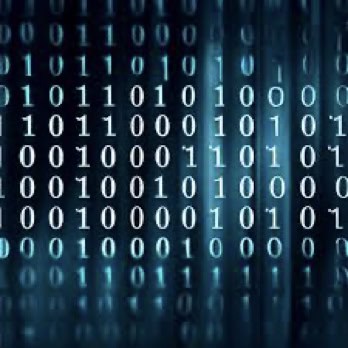
Binary Thinking and the Post-secular
Rebecca Catto
Associate Professor of Sociology
Kent State University
Whilst the Wabash Pastoral Leadership Program appears to be wonderfully applied and practical, helping pastors help their communities, with this piece, I want to take a step back and get theoretical. This is because what might seem an abstruse concern matters. Frames shape our thinking, and one commonly critiqued frame is binary thinking. If we think of binary code e.g. 01, then the presence of 0 means the absence of 1. It is either/or. Yet, 0 and 1 are the same kind of thing: they are both numbers and they are in relationship. There is continuity rather than mere opposition. Can this basic observation help us rethink binary thinking?
Religious-secular is a common binary in the contemporary US, as are liberal-conservative, Democrat-Republican, them-us, binaries we may wish to challenge, because they divide. Scholars have written a lot trying to define the religious and the secular. There is obvious continuity and we can observe the two co-occurring. Therefore, there has been a move in secular studies to think of them relationally rather than as a binary. The same goes for science and religion (my own current area of research). Indeed the earliest developments of binary code occurred within Daoism, meditating on yin and yang (Jiefu, 2022). Seventeenth century European philosopher Leibniz drew upon this tradition in his own formation of binary code, intended to discern the divine (Lu, 2020). The reality is entangled, as the concept of the post-secular seeks to address.
Beckford (2012) traced the first use of term post-secular back to 1960s, but saw a rise in its popularity from the late 1990s onwards and identified differing meanings and uses:
- skepticism regarding the extent of secularization in the first place;
- new possibilities for collaboration between the religious and the secular;
- the re-emergence of religion and the sacred in art and culture;
- an increased policy profile for religion;
- a welcoming of forms of religion which are in line with modern, secular values into the public sphere;
- skepticism about the usefulness of the idea of secularism itself.
I think no. 2 is the most relevant meaning here.
French twentieth century theorist Derrida argued for the need to deconstruct binaries, because in them one term is privileged over the other, doing violence. In the Culture Wars the very metaphor of warfare implies opposition and harm. Whether one considers the term conservative or liberal as privileged depends on one’s position. Religion is not on one side of the divide with the secular on the other. Nevertheless, this is a common misconception. In secular liberal circles, religion can become Othered as conservative. In religious conservative circles, the secular as immoral- us-them; self-Other. Yet, in some Jewish and Catholic theological traditions, the Other is not judged as inferior. There is a sense of valuing the Other above the self: respecting their otherness and not looking to subsume it. As God is the absolute Other, then authentic relationships with others in this world can be an expression of love for God. This understanding relates to the philosophical dialogic tradition influenced by Buber and Levinas, where emphasis is placed on authentic individual engagement.
Perhaps this provides a route in for new religious-secular collaborations. Perhaps we do not need to go beyond binaries, but hold the binary with love and mutuality rather than judgment and subjugation: hold the continuity and relationship more than the split. After all, theory does impact practice.
References:
Beckford JA (2012) Public Religions and the Postsecular: Critical Reflections. Journal for the Scientific Study of Religion 51(1): 1-19.
Jiefu X (2022) The Changes and the Teaching of the Early Yin-Yang School. Contemporary Chinese Thought 52(4): 270-91.
Lu M (2020) Chinese Western Comparative Metaphysics and Epistemology: A Topical Approach. Lanham: Lexington Books.
